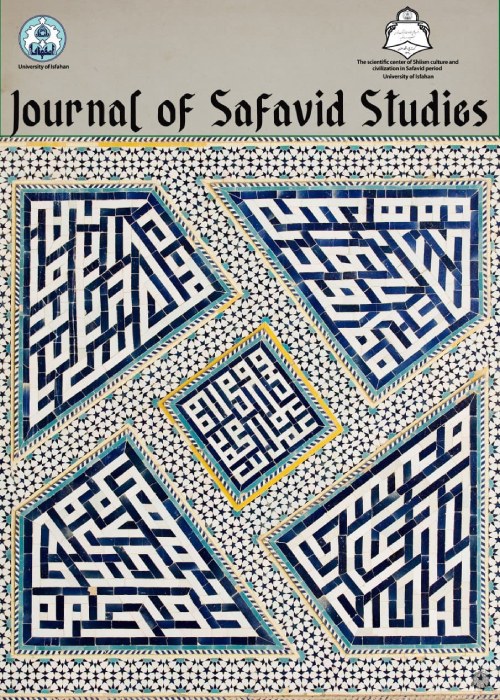The Territory of Iran in the Late Safavid Dynasty according to Gilles Robert de Vaugondy and Didier de Vaugondy’s Etats du Grand-Seigneur en Asie: Empire de Perse, Pays des Usbecs, Arabie et Egypte (The First Half of the 12th Century AH/ 18th Century CE)
Author(s):
Article Type:
Research/Original Article (بدون رتبه معتبر)
Abstract:
Historical maps are one of the most important sources for studying the historical geography of lands, borders of dynasties and territories, historical names and border changes. also, by studying historical maps, one can discover the geographical vision and view of people throughout the centuries and in different societies, and in this way achieve a correct understanding of concepts such as the world, geography, territorial boundaries and things like these. on the other hand, the researcher of Iranian history, especially the researcher of the Safavid era, is bound to refer to various maps that have been drawn about the geographical boundaries of Iran. by studying the elements and data included in the historical maps, one can get a visual understanding of the borders of Iran's territory and the correct recording of specific geographical names. the map of the "Etats du Grand-Seigneur en Asie : Empire de Perse, Pays des Usbecs, Arabie et Egypte" was drawn in the first half of the 12th century AH/18th CE by the efforts of two of the most prominent European cartographers of that era, namely Gilles Robert de Vaugondy and his son Didier Robert de Vaugondy. Vaugondies were prominent cartographers in the 17th and 18th centuries whose scientific activities were largely acknowledged in the French court and across Europe, and European rulers tended to acquire maps and geographical globes developed by the Vaugondies. Now the question is, how did a European cartographer describe the geographical area of Iran in the early 18th century? Did he look at the territory of Iran from a dynastic lens or did he consider it as a whole unit? Adopting a descriptive-analytical approach and qualitative methodology, the present study strives to outline the domain of Iran in the late Safavid period based on the information provided on the map drawn by Gilles Robert de Vaugondy and Didier de Vaugondy. Analysis of obtained data unveils that Vaugondy, alike his contemporaries, regarded Iran as a unit and distinct geography. The image that he provided of the boundary of Iran also aligns with Persian texts of the given era.
Keywords:
Language:
English
Published:
Journal of Safavid Studies, Volume:1 Issue: 2, Summer 2023
Pages:
1 to 10
magiran.com/p2665717
دانلود و مطالعه متن این مقاله با یکی از روشهای زیر امکان پذیر است:
اشتراک شخصی
با عضویت و پرداخت آنلاین حق اشتراک یکساله به مبلغ 1,390,000ريال میتوانید 70 عنوان مطلب دانلود کنید!
اشتراک سازمانی
به کتابخانه دانشگاه یا محل کار خود پیشنهاد کنید تا اشتراک سازمانی این پایگاه را برای دسترسی نامحدود همه کاربران به متن مطالب تهیه نمایند!
توجه!
- حق عضویت دریافتی صرف حمایت از نشریات عضو و نگهداری، تکمیل و توسعه مگیران میشود.
- پرداخت حق اشتراک و دانلود مقالات اجازه بازنشر آن در سایر رسانههای چاپی و دیجیتال را به کاربر نمیدهد.
In order to view content subscription is required
Personal subscription
Subscribe magiran.com for 70 € euros via PayPal and download 70 articles during a year.
Organization subscription
Please contact us to subscribe your university or library for unlimited access!


